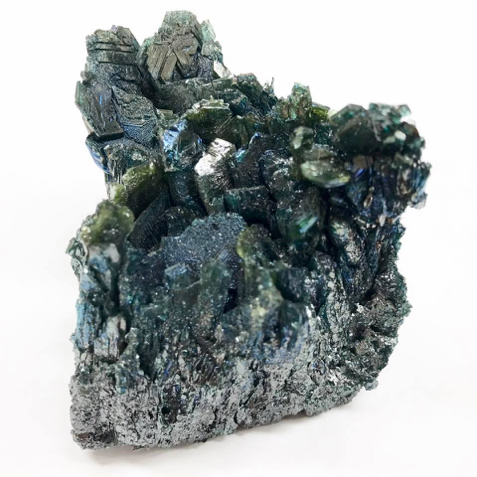#tokyo institute of technology
Breakthrough Puts All-Solid-State Batteries One Step Closer to Becoming Next-Generation Powerhouse
Scientists Reduce All-Solid-State Battery Resistance by Heating
All-solid-state batteries are now one step closer to becoming the powerhouse of next-generation electronics as researchers from Tokyo Tech, AIST, and Yamagata University introduce a strategy to restore their low electrical resistance. They also explore the underlying reduction mechanism, paving the way for a more fundamental understanding of the workings of all-solid-state lithium batteries.
All-solid-state lithium batteries have become the new craze in materials science and engineering as conventional lithium-ion batteries can no longer meet the standards for advanced technologies, such as electric vehicles, which demand high energy densities, fast charging, and long cycle lives. All-solid-state batteries, which use a solid electrolyte instead of a liquid electrolyte found in traditional batteries, not only meet these standards but are comparatively safer and more convenient as they have the possibility to charge in a short time.
Post link
How a tetrahedral substance can be more symmetrical than a spherical atom: A new type of symmetry
Scientists at Tokyo Institute of Technology have theoretically demonstrated that special tetrahedron nanostructures composed of certain metals have a higher degree of symmetry than the geometrical symmetry of spherical atoms. Nanomaterials with unique and unprecedented electrical and magnetic properties arising from this symmetry will be developed and used for next-generation electronic devices.
[…]
Studying symmetry, one of the most fundamental concepts in physics and chemistry, can facilitate a deeper understanding of the laws shaping our universe.
Atoms naturally have the highest degree of geometrical symmetry, corresponding to the spherical symmetry. An interesting property often arising from symmetry is a high degree of degeneracy–a characteristic of quantum energy levels wherein a given energy level can correspond simultaneously to two or more different states in a quantum system. Degeneracy gives rise to properties including high conductivity and magnetism, which could be exploited to create novel electronic materials. Unfortunately, given the limitations of geometrical symmetry, no substance is known to have a higher degree of degeneracy than spherical atoms (Fig. 1). But what if substances could have a different type of symmetry leading to a higher degree of degeneracy? How could such a symmetry be explained?
Post link
SiC crystal, brah!
This crystal of silicon carbide (SiC) is almost as hard as diamond. In fact, moissanite, which is another name for SiC, is used as a less expensive alternative to diamonds in jewelry. Because of its hardness, SiC also is used in bulletproof vests and is added to products to provide a textured surface that won’t wear out, like the grip tape on skateboards. Scientists first discovered SiC in a meteorite in 1893—naturally occurring SiC is extremely rare on Earth. Since then, the vast majority of SiC has been made in the lab. Tokyo Institute of Technology’s Kouichi Yasuda made this 10-cm-tall crystal by applying a direct electric current to a mixture of silicon dioxide and carbon powders.
Submitted by Yoko Taka.
Do science. Take pictures. Win money. Enter our photo contest here.
Related:
High cost of loving
Who deserves credit for the first diamond synthesis
How synthesized precious gems are passing as natural
Post link
Controlling heat flow in a solid by switching crystal structure dimensionality
Just as an electrical switch regulates the flow of electric current, thermal switches can control the flow of heat. These switches serve as thermal control devices and are useful for thermal management applications. For example, they can be used in industries to reduce waste heat, resulting in cost and energy savings. These switches require materials whose thermal conductivity (κ) can be modulated to a large extent. This would allow the switch to have an “on” and “off” state depending on the thermal conductivity. However, such materials are rare and challenging to develop, and those that have been developed show only small reversible variations in their κ.
Now, in a study published in Advanced Electronic Materials, researchers from Tokyo Institute of Technology (Tokyo Tech) and the National Institute for Materials Science, Japan, have taken things to the next level with a material that can achieve a large variation in its κ by changing its crystal structure dimensionality. The team achieved this remarkable feat by using a solid solution of lead selenide (PbSe) and tin selenide (SnSe), which can switch between a 3-dimensional (3D) cubic crystal structure and a 2-dimensional (2D) layered crystal structure with changes in temperature.
Post link







